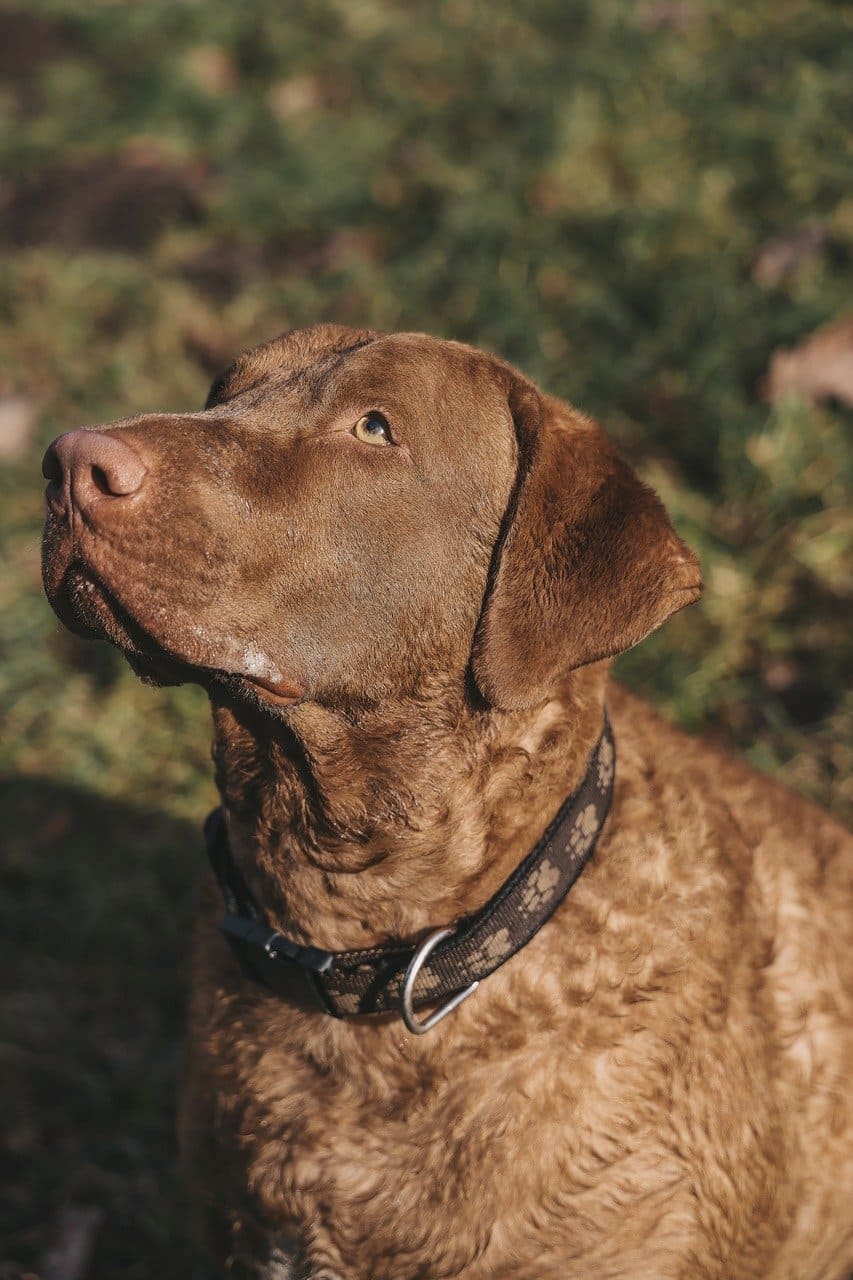The Chesapeake Bay Retriever, often affectionately referred to as the “Chessie,” is a remarkable breed known for its waterfowl hunting prowess, unwavering loyalty, and exceptional work ethic. With a rich history and a unique set of characteristics, Chessies have captured the hearts of many dog enthusiasts. In this comprehensive article, we will delve into the world of Chesapeake Bay Retrievers, exploring their history, physical characteristics, temperament, health considerations, and more to provide a detailed understanding of this exceptional breed.
History of the Chesapeake Bay Retriever

The Chesapeake Bay Retriever has a fascinating and storied history that dates back to the early 19th century in the United States. The breed’s origins are deeply intertwined with the Chesapeake Bay region, where it was developed to meet the specific needs of local waterfowl hunters.
Origin and Development
The precise ancestry of Chesapeake Bay Retrievers is a subject of debate, but it is widely accepted that their lineage can be traced back to two Newfoundland dogs named Sailor and Canton. These dogs are said to have survived a shipwreck off the coast of Maryland in 1807 and were later crossbred with various local hounds and retriever-type dogs.
These early crosses laid the foundation for the Chessie’s development, resulting in a breed specially suited to the rugged and challenging conditions of the Chesapeake Bay area. The harsh, icy waters of the bay required a dog with unique characteristics, such as a dense, waterproof coat, webbed feet for efficient swimming, and a strong work ethic. Thus, the Chesapeake Bay Retriever was born to fulfill the needs of waterfowl hunters in the region.
Early Utilization
Chesapeake Bay Retrievers quickly gained a reputation as formidable waterfowl hunting dogs. They excelled in retrieving waterfowl in difficult conditions, often facing icy waters and strong currents. Their exceptional work ethic, adaptability, and endurance made them indispensable companions for hunters.
Breed Recognition
In 1878, the American Kennel Club (AKC) officially recognized the Chesapeake Bay Retriever as a breed. This recognition solidified their status as a distinctive and valuable breed with qualities that set them apart from other retrievers.
Physical Characteristics
Chesapeake Bay Retrievers have a unique set of physical characteristics that reflect their purpose as waterfowl retrievers. These features make them well-suited for the challenging conditions of the Chesapeake Bay and similar environments.
Size
Chesapeake Bay Retrievers are medium to large-sized dogs. Adult males typically stand between 23 to 26 inches (58 to 66 cm) at the shoulder and weigh between 75 to 80 pounds (34 to 36 kg). Adult females are slightly smaller, with a height of 21 to 24 inches (53 to 61 cm) and a weight of 55 to 65 pounds (25 to 29 kg).
Coat
One of the most distinctive features of the Chesapeake Bay Retriever is its dense and waterproof double coat. This coat consists of a short, harsh outer layer and a soft, insulating undercoat. The coat color can vary but typically includes shades of brown, sedge (a reddish-yellow hue), or deadgrass (a pale straw color).
The waterproof coat serves as a protective barrier when Chessies are working in water. It effectively repels moisture and helps keep them warm in cold, wet conditions. This feature is a testament to the breed’s adaptability to challenging environments.
Eyes
The breed’s amber-colored eyes are one of its defining physical features. Chessies are known for their intense and intelligent gaze, which reflects their strong work ethic and determination. The eyes are medium-sized, and the expression should be alert and focused.
Webbed Feet
Chesapeake Bay Retrievers have webbed feet, a crucial adaptation that aids them in swimming efficiently. These webbed feet make them exceptionally skilled swimmers and retrievers, allowing them to navigate water with ease.
Tail
The breed’s tail is moderately long, set high, and is typically carried straight or with a slight curve. The tail’s design contributes to their balance and stability in the water.
Temperament and Behavior
The Chesapeake Bay Retriever’s temperament and behavior are a reflection of their history as hardworking waterfowl retrievers. They are known for their loyalty, intelligence, and protective nature.
Loyalty and Devotion
Chessies are extremely loyal and devoted to their families. They form strong bonds with their owners and are often protective of them. This loyalty makes them excellent companions and watchdogs. They will go to great lengths to protect their loved ones if they sense a threat.
Intelligence and Trainability
Chesapeake Bay Retrievers are highly intelligent dogs. Their keen minds make them quick learners, and they respond well to training. With consistent, positive reinforcement-based training, they can excel in various canine activities, including obedience, agility, and tracking.
However, it’s important to note that Chessies can also be stubborn and independent. While their intelligence aids in learning commands, their determination and strong-willed nature can sometimes lead to resistance during training. Patience and consistency are key when working with this breed.
Protective Instinct
The protective instinct in Chesapeake Bay Retrievers is a valuable trait for those looking for a loyal and vigilant companion. They are natural protectors and will alert their owners to any unusual activity or visitors. This protective nature makes them excellent watchdogs, adding an extra layer of security to your home.
Strong Work Ethic
The Chessie’s strong work ethic is deeply ingrained in their DNA. They take their jobs seriously, whether it’s hunting waterfowl, participating in dog sports, or assisting with tasks around the house. Their dedication and determination to complete a task make them excellent working dogs.
Endurance and Stamina
Chesapeake Bay Retrievers are known for their exceptional endurance and stamina. They have the ability to keep going for hours, making them ideal companions for active individuals and families who enjoy outdoor activities. Whether it’s hiking, jogging, or participating in dog sports, they can keep up and thrive in physically demanding environments.
Aggression Towards Other Dogs

One aspect of the Chesapeake Bay Retriever’s temperament that potential owners should be aware of is their tendency to be aggressive towards other dogs, particularly those of the same sex. This aggression is rooted in their strong prey drive and territorial instincts.
Early socialization is crucial to help manage and mitigate this aggression. Exposing them to various dogs and environments from a young age can help them become well-adjusted and less likely to develop behavioral problems.
Boredom and Behavioral Issues
Chesapeake Bay Retrievers have active minds and require regular mental stimulation. Without it, they can become bored and engage in undesirable behaviors, such as digging or excessive barking. Providing puzzle toys, interactive games, and training sessions is essential to keep their minds engaged and prevent behavioral issues.
Adaptability
Chesapeake Bay Retrievers are adaptable dogs that can thrive in various living environments. Whether you reside in a city apartment or a rural farmhouse, they can adjust to your lifestyle. However, it’s crucial to ensure that they receive the exercise and mental stimulation they need to stay happy and healthy.
Health Considerations
Chesapeake Bay Retrievers are generally a healthy breed with a longer lifespan compared to some other large breeds. However, like all breeds, they are prone to certain health issues that potential owners should be aware of.
Hip Dysplasia
Hip dysplasia is a common concern in Chesapeake Bay Retrievers. This condition occurs when the hip joint doesn’t develop properly, leading to arthritis and mobility issues. Responsible breeding practices and regular veterinary check-ups are essential to manage and mitigate the risk of hip dysplasia.
Elbow Dysplasia
Elbow dysplasia is another orthopedic condition that can affect Chessies. It involves abnormal development of the elbow joint, leading to lameness and pain. Responsible breeders screen for elbow dysplasia in their breeding dogs to reduce the risk.
Progressive Retinal Atrophy (PRA)
Progressive Retinal Atrophy is a hereditary eye disease that can lead to blindness. Regular eye exams by a veterinary ophthalmologist can help diagnose and monitor this condition. It’s important for breeders to test their dogs for PRA to reduce the risk of passing it on to their offspring.
Exercise-Induced Collapse (EIC)
EIC is a genetic condition that primarily affects working breeds, including Chesapeake Bay Retrievers. It can cause dogs to suddenly lose control of their hind limbs during strenuous exercise. Responsible breeders can screen for EIC to avoid breeding dogs with the mutation.
Hypothyroidism
Hypothyroidism is a condition where the thyroid gland doesn’t produce enough hormones, leading to various health issues. Regular veterinary check-ups and thyroid function testing can help diagnose and manage this condition.
Weight Management
Chesapeake Bay Retrievers have hearty appetites and a love for food. Without careful monitoring, they can be prone to weight gain, which can lead to a range of health problems, including joint issues. Maintaining a healthy diet and regular exercise is essential to prevent obesity.
Other Health Considerations
Apart from the aforementioned conditions, Chessies can be susceptible to ear infections, allergies, and skin issues due to their love for water and mud. Regular grooming and hygiene practices can help prevent these issues.
Grooming and Care
Maintaining the health and appearance of a Chesapeake Bay Retriever requires regular grooming and care.
Coat Care
The Chessie’s waterproof coat is relatively low maintenance in terms of brushing. Regular brushing helps remove loose hair and prevent matting. They shed throughout the year, with increased shedding during seasonal changes. Occasional baths are also necessary to keep their coat clean and odor-free.
Ear Care
Their ears should be regularly checked for signs of infection, especially if they’ve been swimming. Keeping the ears clean and dry can help prevent ear issues.
Dental Care
Proper dental care is essential for the breed. Regular tooth brushing and dental check-ups can help maintain their oral health.
Exercise and Mental Stimulation
Due to their high exercise requirements, it’s important to provide Chessies with daily, vigorous exercise. Engaging them in physical activities and mentally stimulating games is key to keeping them happy and preventing behavioral problems.
Is a Chesapeake Bay Retriever Right for You?
Before deciding to bring a Chesapeake Bay Retriever into your life, it’s crucial to evaluate whether this breed aligns with your lifestyle and expectations. The unique characteristics and traits of Chessies may be a perfect fit for some, but not for others. Here are some factors to consider:
- Experience with Dogs: Chessies are not recommended for first-time dog owners. They require experienced handling and consistent training due to their stubborn and independent nature.
- Training Commitment: Are you willing to invest the time and effort into consistent training, especially given their strong-willed nature?
- Exercise Needs: Can you provide the necessary daily exercise and mental stimulation required for this breed? Chessies need to expend their energy to stay happy and well-behaved.
- Early Socialization: Will you dedicate time to early socialization to prevent potential aggression towards other dogs?
- Living Environment: Do you have a safe and secure environment for them, considering their protective instincts and potential aggression towards other dogs?
- Grooming and Shedding: Are you comfortable with their shedding and grooming requirements?
- Health Considerations: Are you prepared for potential health issues and regular veterinary check-ups to ensure their well-being?
- Loyalty and Bonding: Do you have the time and dedication to nurture their loyalty and form a strong bond with them?
If you answered positively to most of these questions and are prepared to meet the needs of a Chesapeake Bay Retriever, this breed can be an excellent addition to your family. They are known for their loyalty, intelligence, and strong work ethic, making them wonderful companions for those who can provide the necessary care and attention.
Conclusion

The Chesapeake Bay Retriever is a remarkable breed with a rich history and unique set of characteristics. Their origins as waterfowl hunting dogs in the challenging Chesapeake Bay region have shaped them into loyal, intelligent, and hardworking companions.
While Chessies come with their own set of challenges, including potential stubbornness and aggression towards other dogs, their remarkable qualities make them a favorite among dog enthusiasts. Their loyalty, intelligence, and work ethic are second to none, and their adaptability to different living environments makes them a versatile breed.
Before deciding to bring a Chesapeake Bay Retriever into your life, carefully consider their history, physical characteristics, temperament, and health considerations. If you have the experience, time, and dedication to meet their needs, a Chessie can become a devoted and loving member of your family, bringing years of joy, companionship, and adventure to your life.
